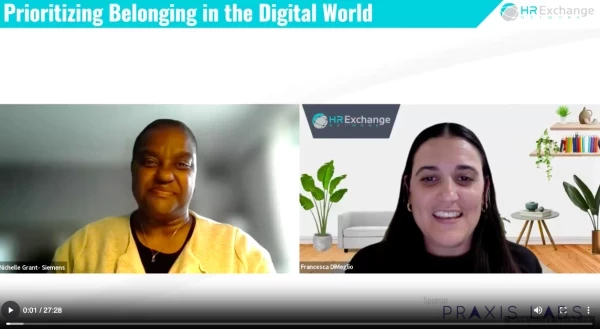
Rayshawnda Madison, Head of Diversity, Equity, and Inclusion at Invitae, a medical genetics test company, was so passionate about DEI that it spilled into the rest of her organization. A couple years ago, she was recruiting employees for the company, and she noticed little conversation about DEI. Meanwhile, she says that she “just couldn’t shut up about it.”
“In most organizations, there was this assumption that diversity was happening organically because diversity was everywhere you looked around. That’s not always true, right? Diversity needs attention,” says Madison. “It needs leadership. It needs influence. You can’t just assume that it’s happening organically, right? You have to have drivers for it.”
Invitae was receptive to her call to action, and she become the leader of DEI. Executives, including the CEO, have bought into the mission. Two years later, says Madison, the organization has made much progress.
“We've brought programming, we've established employee resource groups, we've revamped some of our recruiting process to focus on inclusion being at the center of it,” says Madison. “All those things require you to help the organization level up. I would say that is a challenge.”
Madison will continue this conversation and share how HR leaders can leverage employee resource groups to spread the message and do the work of diversity, equity, and inclusion strategy at the HR Exchange Network DEI online event on July 12. The event is free to join and live participants are eligible for SHRM credits.
HREN: What are the greatest challenges that you're confronting now as someone heading up DEI at your organization?
With any DEI practitioner, you're constantly having to lay the groundwork, so that your organization can continue to level up in their learning and their experiences. And so really, the challenge with DEI is knowing that everyone's at a different point in their journey. It's not singular; it doesn't all start at the same time. Everyone doesn't wake up with a level of awareness for it. There are different levels. And you've got to be able to meet everyone where they are in their journey toward inclusion. Although a challenge, I also think this is what keeps that fire in my belly, and that is knowing that this is a marathon. It's not a sprint, and I must pace myself and pace my organization at the same time.
HREN: How do you make sure you are not just talking the talk, but walking the walk, and also that this is truly a priority for people in your organization?
RM: For me, what's always been important is that DEI doesn't just live with me. I'm a superstar, right? I'm going to make a lot happen. But if you're counting on me and me alone to drive DEI, across the organization, you're setting me up to fail. You're setting the organization up to fail, too.
What’s important to me is making sure that people have authority, and they feel like they can have ownership over DEI for them. And that's really empowering all of our employees. That was part of our strategy with building DEI. It was important for me to make sure that it didn't just live and breathe in HR. The CEO and I have said that from the very beginning, everybody has to hold a piece of DEI close to them. They have to have their own commitments.
I encourage our leaders to figure out why it is important to them. I can give you a laundry list on why it's important to the organization, why it's important to our business, and to our industry of biotech. But as a leader, you have to find some closeness and some courage to figure out why you want to be an inclusive leader because the people that you influence, the teams that you lead, will buy into it better if it comes from you.
For me, it's important to make sure that DEI is at the top of everyone's mind no matter where they sit in the organization. That really helps us live and breathe it, making sure that all our leaders are not just talking about it, they're actually being about it.
Part of our strategy was to make sure that we had these pillars and we had these problem statements that we're all trying to solve regardless of where you are in the organization. For instance, talent acquisition [employees] are always trying to solve the problem of how can we better diversify our teams.
For talent management, we want to understand how we can develop inclusive resources and offer equitable opportunities that really contribute to our employees’ professional development. That's the problem statement. For things like policy and research, how do we go about making sure that precision medicine includes diverse populations? We're starting the conversation about products. Who are we serving? Who are we not serving in this matter? When we think about sales, who are we not selling to? We’re always thinking of a way to make it inclusive.
Don't miss Rayshawnda's session and the others at the HR Exchange Network DEI online event, which is free to join. Register on the HREN website.




























